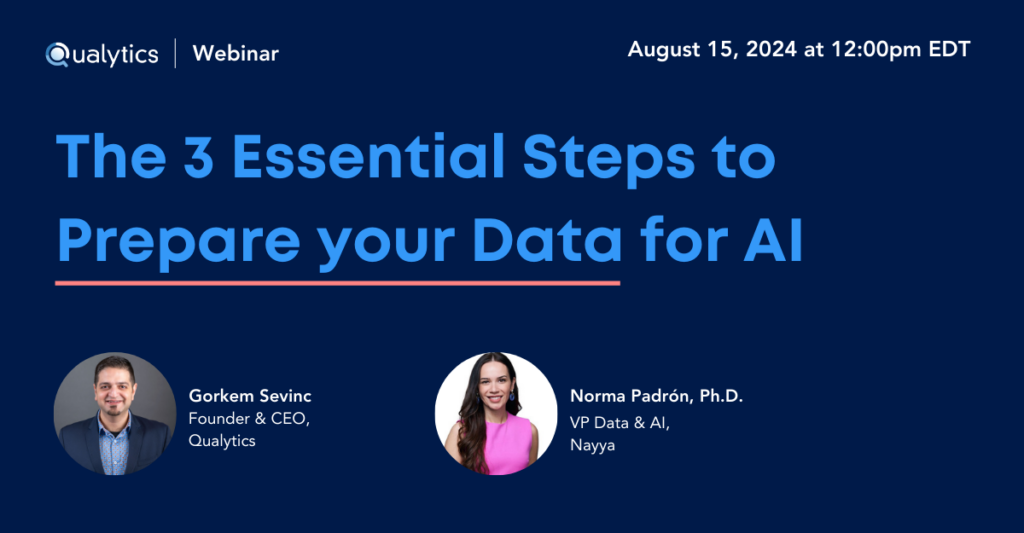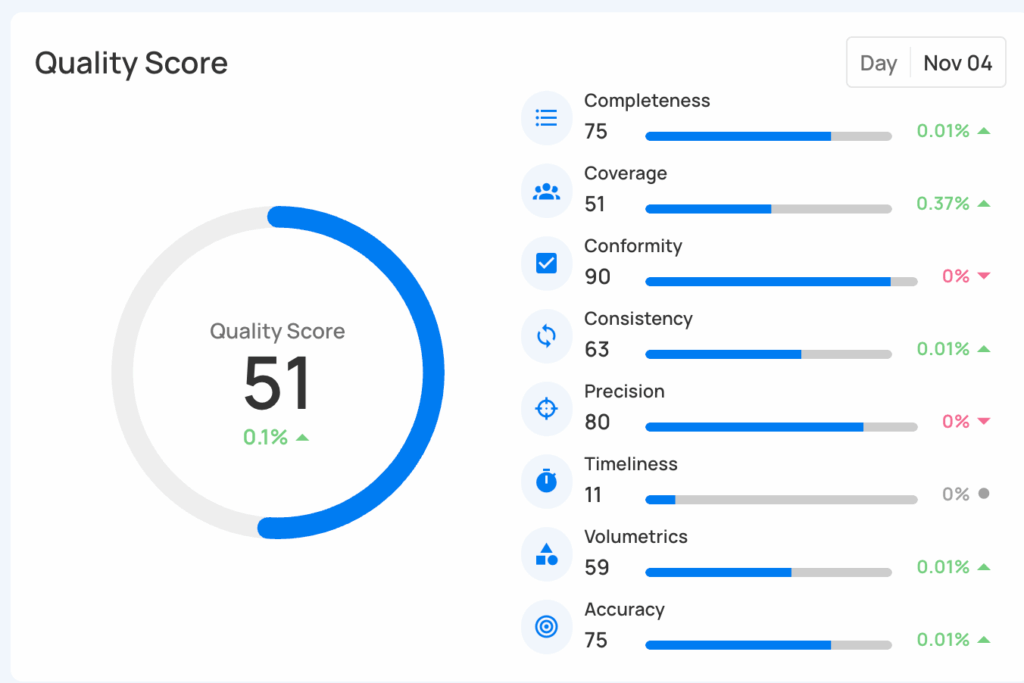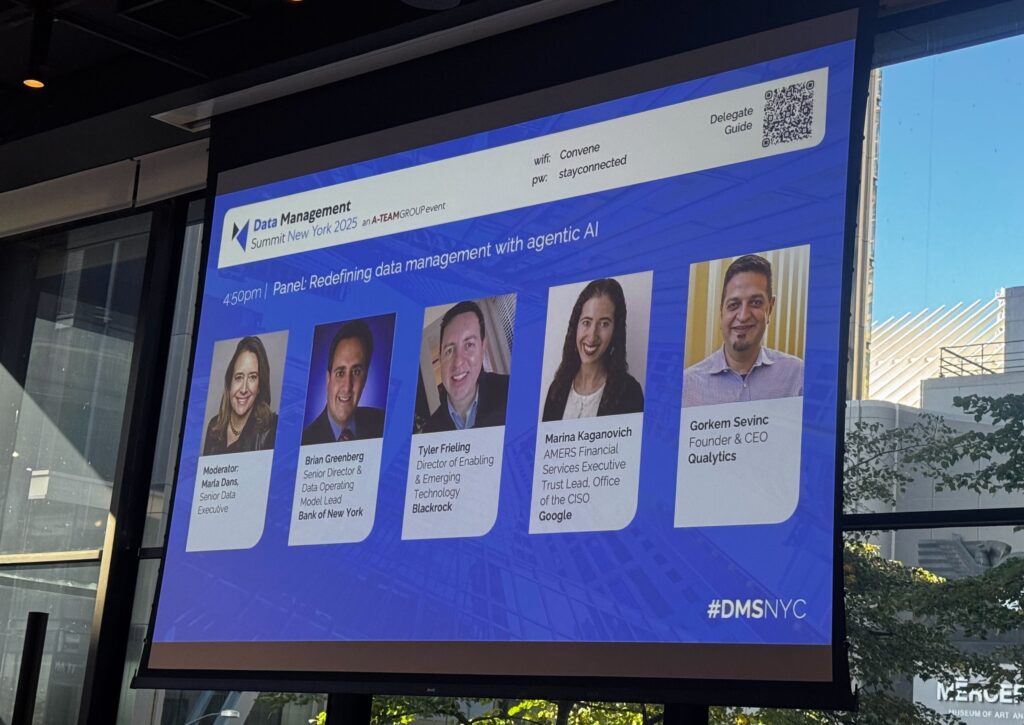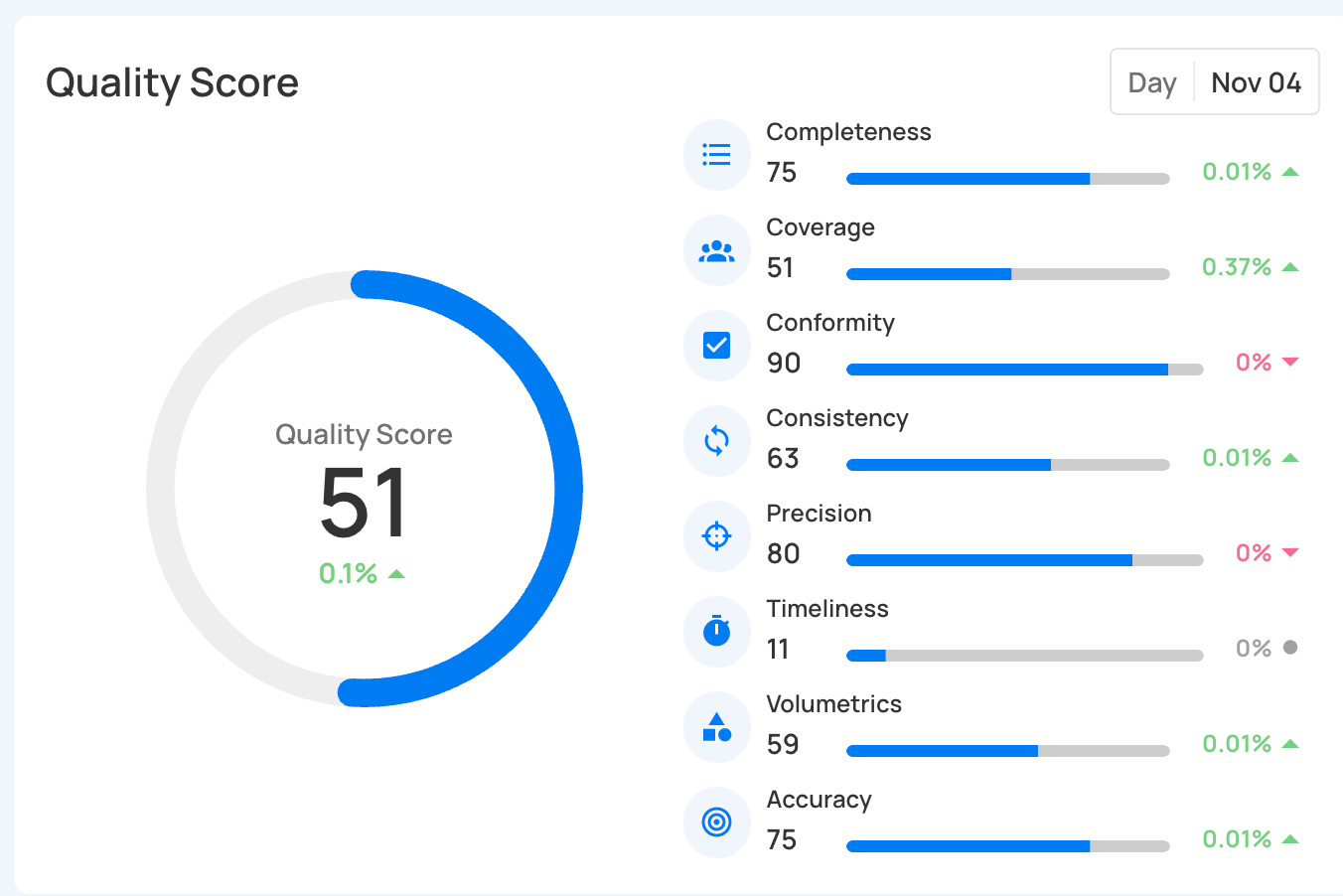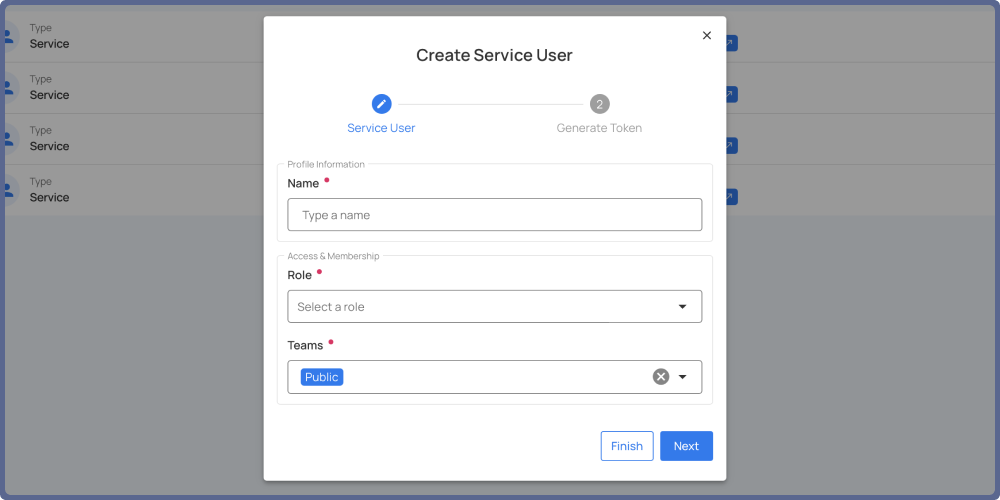Webinar Recap: Practical Steps to Get AI-Ready
Most organizations are prioritizing AI initiatives and making plans to get their data and infrastructure ready for AI. But where and how should they start?
On August 15, 2024, our own Gorkem Sevinc and Norma Padron from Nayya broke down what it really takes to get AI-ready in a joint webinar. Here’s a quick rundown of the top insights from their conversation:
1. Start by Getting Your Data in Order
Before diving into AI projects, you need to make sure your data infrastructure is solid. Gorkem was clear on this point: “Your AI won’t be worth much if your house isn’t in order.” This means implementing a strong Data Governance Program that includes comprehensive metadata management, reliable data pipelines, and continuous data quality monitoring. Without these, your AI efforts are going to be built on shaky ground.
2. Data Governance is a Team Effort
AI readiness isn’t just about having the right tools; it’s also about teamwork. Both stressed the importance of a shared responsibility model where both data teams and business experts collaborate. This ensures that the AI models are informed by the right business logic, avoiding the pitfalls of data that doesn’t reflect real-world conditions.
3. Reliable Data Processes Are Still Key
Despite all the advancements in AI, the fundamentals haven’t changed: you still need reliable, consistent data processes. As Gorkem mentioned, “The groundwork for data processes hasn’t changed—it’s just sped up.” If your data input isn’t consistent and trustworthy, your AI output won’t be either.
4. Think of Data as a Product
Norma suggested treating data—and the AI models that rely on it—like products. This approach is about more than just semantics; it’s about ensuring that your data is managed, monitored, and governed like any other critical asset. When you treat data as a product, you’re more likely to implement the necessary checks and balances to keep it high quality.
5. Leverage Augmented Data Quality Frameworks
The pair wrapped up by talking about the advantages of using an augmented data quality framework. Centralized controls, combined with AI-driven automation, allow organizations to scale their data quality efforts efficiently. This setup not only speeds things up but also ensures that the data your AI models rely on is as accurate as possible.
Final Thoughts
Getting AI-ready isn’t a walk in the park, but if you nail down the basics—like data governance, collaboration, and automation—you’re well on your way. The insights from Gorkem and Norma provide a practical guide to making sure your AI initiatives are built on a solid foundation.
Missed the webinar? Catch the full recording below and see how Qualytics can help your team get AI-ready.
